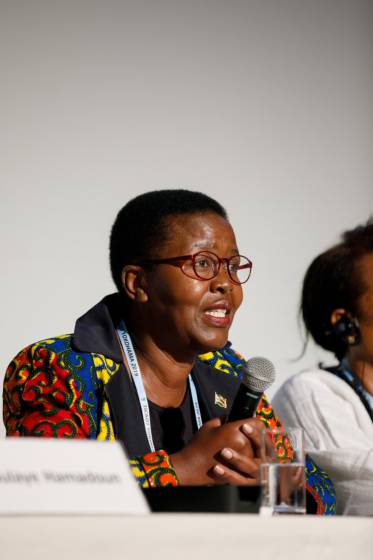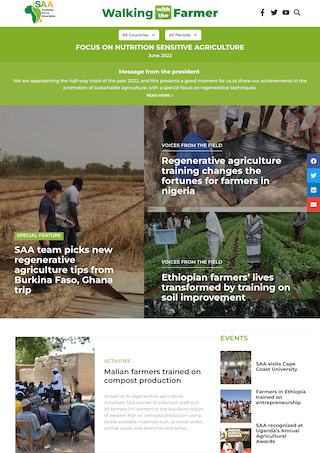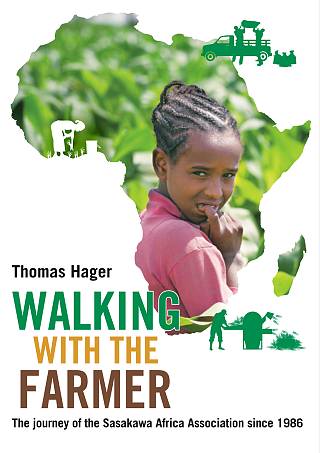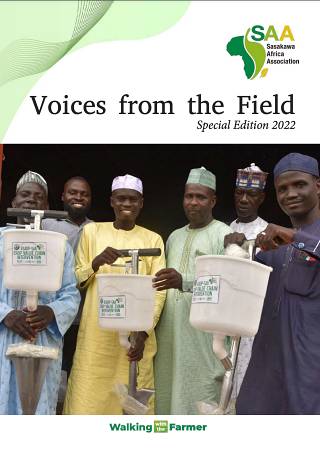Interview Series 2: Entrepreneurship in Agriculture with Lindiwe Majele Sibanda

For Lindiwe Majele Sibanda, the Sasakawa Africa Association (SAA) “is a movement with an unique way of doing extension which can involve Africa’s youth”. Speaking at the TICAD V11 Side Event in Yokohama on a panel to discuss “Africa’s youth and entrepreneurship in agriculture”, she described, how she became an agripreneur – and then took full advantage of the opportunities that this offered.
“I hope this will be an inspiration and an example to young people”, she said.
Bulawayo, Zimbabwe born, and where she lives today, Lindiwe started her life in agriculture “at the tender age of ten. Every school holidays, three times a year for a total of 90 days a year without fail, I visited my grandmother Mahembe at her farm in Lower Gweru village and helped her on the one hectare family farm. The farm was the pride of the village. It fed not only my grandmother’s six grown up adult children but also her 30 grandchildren. Grandmother Mahembe’s priority was to make her farm a source of food, nutrition and medicine for her family. The farm was decorated in rainbow colours carefully divided into a cereal patch of white corn, red sorghum, millet and sweet sorghum. If the rainy season was bad the corn yields were low but we still had the small grains, brown millet and sorghum, for our staple diet. The patch for root crops had Irish potatoes and sweet potatoes. The legumes’ patch had cow peas and beans. The vegetable patch had onions, tomatoes and cabbages”.
Her grandmother “kept livestock at the far end of the farm – a small kraal with twelve goats and one dairy cow which provided us with milk and some free ranging chickens which provide eggs and with chicken meat reserved for special occasions.
“All 30 grandchildren participated in all agricultural activities with tasks, allocated according to age, from planting and cultivation to harvesting and storage, on farm processing, preparation of meals and washing of dishes. The day started at sunrise and ended approximatively two hours after sunset. This gave us an average of a 13 - 15 hour working day on the farm.
“So, thanks to grandmother Mahembe, agriculture is in my blood. She instilled in me the passion for agriculture that inspired me to remain in school until I attained my PhD in Animal Production”.
After her PhD graduation, she worked as a university professor – but her entrepreneurial spirit and the inspiration of her grandmother’s smallholder farm would not be denied. She moved into the private sector and was awarded a two week fellowship by Empretec, a United Nations programme established by UNCTAD (United Nations Conference on Trade and Development) to promote sustainable, innovative, and internationally competitive small and medium-sized enterprises (SMEs). Using this experience, and developing her own ideas, she designed and launched her own business – Linds Agricultural Services, which is now 23 years old and provides agricultural policy advisory services, cattle and goat farming, abattoir services and meat retail services.
Add to this a range of accomplishments including her current position as Co-chair of the Global Alliance for Climate Smart Agriculture, Board member of the World Vegetable Centre, and previous positions that include: Vice President of AGRA (The Alliance for a Green Revolution in Africa), CEO of FANRPAN (Food, Agriculture and Natural Resources Policy Analysis Network), Board Chair of ILRI (International Livestock Research Institute), Lindiwe has put her entrepreneurship spirit to good use.
To help encourage youth into agriculture, the subject of the Side Event, she said that three fundamentals were needed. “Firstly enhanced productivity – the ability to improve output per worker, particularly ensuring that the girl child, who is often left behind, also has access and educational opportunities. Secondly, connectivity – to people, knowledge, markets, services, ideas, and information, while creating opportunities for the rural youth to become more fully integrated with their transforming economies. Finally, agency: the youth need to be in charge, free of social norms that constrain them in order to become more productive and connected. Young people in rural areas must have the power to make decisions in their own interest. This is particularly critical for the successful inclusion of youth in the rural transformation process, since rural youth tend to be more excluded than urban youth.”
The Japanese contribution, she said, was liked in Africa, not least because the Japanese, particularly volunteers, respected local culture and leadership when they worked at village level. “Japan has a unique opportunity, because of its comparative advantage in ICT, to drive youth engagement in agriculture through the digitalisation of agriculture, which is a game changer. Disruptive technologies like drought-resilient seeds and digital tools like drones, as well as artificial intelligence, can play powerful roles and be a draw for our youth.”
She further believes that “every African country must have a smart agriculture transformation plan. This should be a flagship programme for the country that is costed in terms of its human resource capability and financial requirements. Secondly the plan has to be climate proofed because currently only 4% of Africa has access to irrigation and water. Thirdly it ought to be modernised in terms of ICT because access to information in the traditional way is not going to work and planning using the wrong data is not going to open up markets. Fourthly, accountability, monitoring and coordination mechanisms that allow impact assessment. Then finally, it ought to create profitable business opportunities for all the value chain role players. All this is important for creating employment opportunities that also involve our youth”.
For SAA she also believes that the programme, with its current outreach to tens of thousands of farmers, is a market for new technology and climate smart and nutrition sensitive agriculture.
Then there is the SAFE (Sasakawa Africa Fund for Extension Education), part of SAA, linking 26 African universities with practical agricultural curricula, which has graduated 7,000 mid-career extension agents over the last 25 years. This example could be used for the further targeting of Africa’s youth, she suggests, by creating a business school for farming using the SAFE model and involving a similar network of African universities.
“Sasakawa has a reputation for capacity building”, she says, “and this would be a stepping stone for involving our youth in agriculture and igniting the entrepreneurial spirit.”
SAA Publications

E-newsletter
"Walking with the Farmer"
SAA publishes a bimonthly e-newsletter reporting on SAA activities.

SAA history book
"Walking with the Farmer: The journey of the Sasakawa Africa Assoication since 1986"
This book chronicles the history of SAA from its inception to the present.

Success stories
Voices from the Field Special Edition 2022
This is a special edition of the "Voices from the Field" articles.




